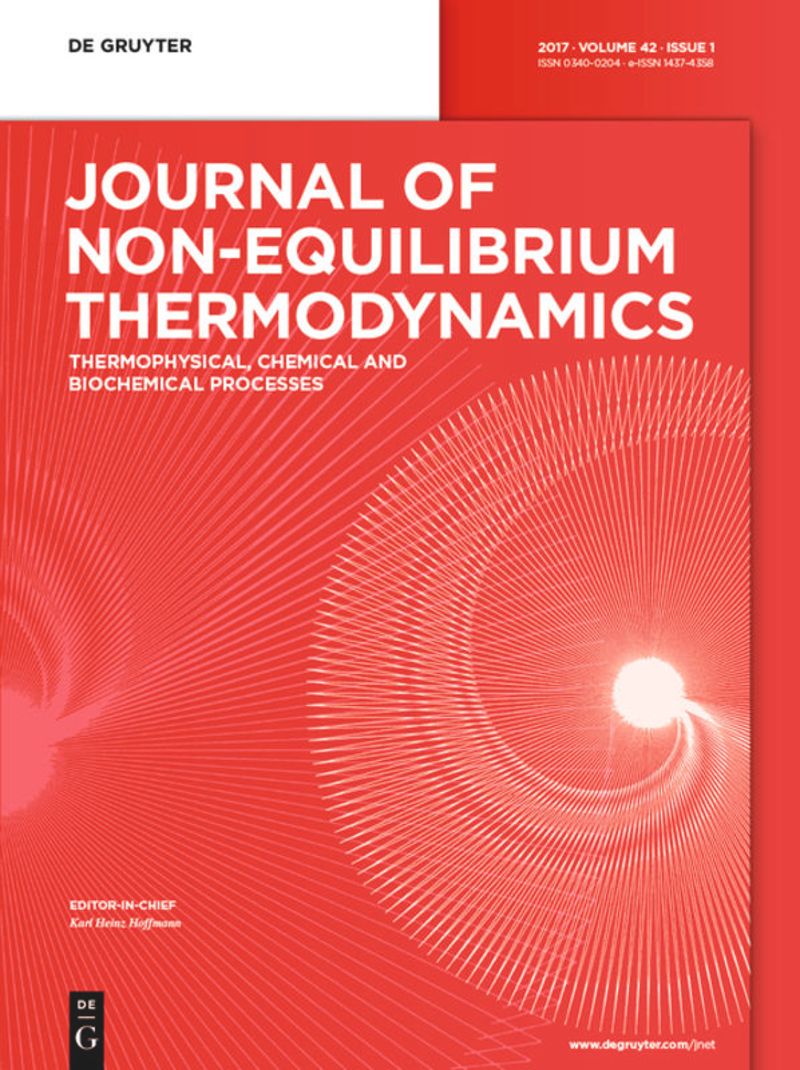Thermodiffusion, diffusion and Soret coefficients of binary polymeric mixtures in toluene and cyclohexane
IF 4.2
3区 工程技术
Q1 MECHANICS
引用次数: 0
Abstract
We present the results of experimental study on measuring the thermodiffusion, molecular diffusion and Soret coefficients of polystyrene (4,880 g/mol) in the pure solvents toluene and cyclohexane at 298 K and atmospheric pressure. The experiments have been carried out for a wide range of concentrations, starting from the diluted state with 2 % polystyrene mass fraction (proposed in the DCMIX4 project) up to the semidilute regime of 20 % polystyrene mass fraction. In addition, we present a complete characterisation of the thermophysical properties of the analysed mixtures. Thermodiffusion, molecular diffusion and Soret coefficients of binary polymeric samples have been measured by combining the traditional thermogravitational column technique, the thermogravitational microcolumn and the optical beam deflection method. In toluene, the obtained experimental results are consistent with literature, showing that the magnitude of the mass transport thermoproperties decrease significantly with increasing polystyrene concentration, which is a first indication of an approaching glass transition in the concentrated regime. The results for thermodiffusion and molecular diffusion coefficients in cyclohexane as a function of concentration exhibit a similar trend. Nevertheless, the Soret coefficient seems to show an opposite tendency for the two solvents, increasing in magnitude for cyclohexane, at least up to the analysed polystyrene concentration.甲苯和环己烷中二元聚合物混合物的热扩散、扩散和索雷特系数
我们介绍了在 298 K 和大气压力下测量聚苯乙烯(4,880 g/mol)在纯溶剂甲苯和环己烷中的热扩散、分子扩散和索雷特系数的实验研究结果。实验的浓度范围很广,从聚苯乙烯质量分数为 2% 的稀释状态(DCMIX4 项目中提出)到聚苯乙烯质量分数为 20% 的半稀释状态。此外,我们还对所分析混合物的热物理性质进行了全面描述。我们结合传统的热重柱法、热重微柱法和光束偏转法,测量了二元聚合物样品的热扩散、分子扩散和索雷特系数。在甲苯中,获得的实验结果与文献一致,表明随着聚苯乙烯浓度的增加,质量输运热性能的大小显著下降,这是聚苯乙烯在浓缩体系中接近玻璃化转变的第一个迹象。环己烷中的热扩散系数和分子扩散系数随浓度变化的结果也呈现出类似的趋势。不过,索雷特系数在这两种溶剂中似乎呈现出相反的趋势,环己烷的索雷特系数增大,至少在分析的聚苯乙烯浓度范围内是如此。
本文章由计算机程序翻译,如有差异,请以英文原文为准。
求助全文
约1分钟内获得全文
求助全文
来源期刊
CiteScore
9.10
自引率
18.20%
发文量
31
审稿时长
1 months
期刊介绍:
The Journal of Non-Equilibrium Thermodynamics serves as an international publication organ for new ideas, insights and results on non-equilibrium phenomena in science, engineering and related natural systems. The central aim of the journal is to provide a bridge between science and engineering and to promote scientific exchange on a) newly observed non-equilibrium phenomena, b) analytic or numeric modeling for their interpretation, c) vanguard methods to describe non-equilibrium phenomena.
Contributions should – among others – present novel approaches to analyzing, modeling and optimizing processes of engineering relevance such as transport processes of mass, momentum and energy, separation of fluid phases, reproduction of living cells, or energy conversion. The journal is particularly interested in contributions which add to the basic understanding of non-equilibrium phenomena in science and engineering, with systems of interest ranging from the macro- to the nano-level.
The Journal of Non-Equilibrium Thermodynamics has recently expanded its scope to place new emphasis on theoretical and experimental investigations of non-equilibrium phenomena in thermophysical, chemical, biochemical and abstract model systems of engineering relevance. We are therefore pleased to invite submissions which present newly observed non-equilibrium phenomena, analytic or fuzzy models for their interpretation, or new methods for their description.

 求助内容:
求助内容: 应助结果提醒方式:
应助结果提醒方式:


